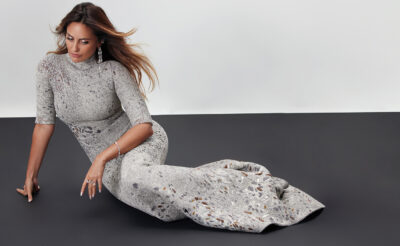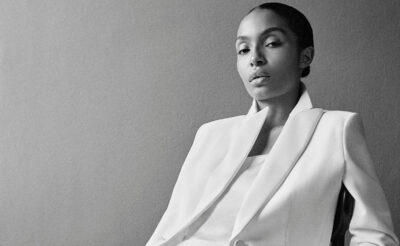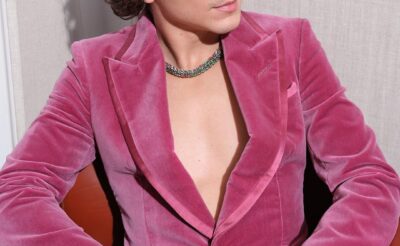Inpirited with an unwavering commitment to their craft and fellow creatives, Beirut’s designers are rising up from utter devastation
This time three years ago, I was a stylist sauntering down the sprawling streets of Gemmayze, in awe of the layers of history embedded in the picturesque architecture, the matchless east-meets-west spirit fuelling the city, and the unwavering joviality of the Lebanese locals. It was my first trip to Beirut, and while scouting for a shoot with my fashion editor, we slipped in and out of the side streets of the city’s arts quarters, filling our bags with souvenirs and our stomachs with the freshly-baked ka’ak bread – a fashion accessory of sorts, taking the shape of a sesame seed-embellished purse.
We ducked into The Starch Foundation in Saifi District to get acquainted with some of Beirut’s up-and-coming designers, and were enthusiastically greeted by Roni Helou, whose penchant for deconstructed shirting made us instant disciples of the brand. Then, we trekked towards Zuhair Murad’s atelier, mistakenly taking the back stairs of the building and catching glimpses of statuesque mannequins and decadent fabric rolls before we were discovered and quickly ushered to the main entrance.
We were utterly smitten with the quaint boutique studio of jewellery brand Vanina, nestled in Mar Mikhael, where I took mental images of the interiors – the gold chrome furniture legs, blush pink accents and minimalist greenery – filing them away as a mood board for my next home. A tray filled with glimmering rings emblazoned with catchy phrases in loopy, cursive writing proved too tempting to resist, and I chose for myself a trio spelling out “more” “than” “words,” in intricately-molded gold.

Saifi Village before the blast on August 4
Later, our arms aching with bags full of samples and feet feeling the weight of our insistence on walking all day long, we passed the glorious Mohammad Al-Amin mosque, a stone’s throw away from Martyr Square. My editor, a seasoned Beirut visitor, gave me a crash course on this iconic landmark which, over the past two and a half centuries, has been repeatedly renamed and renovated, and even used as the demarcation line to divide the city in two during the 15-year civil war.
“Beirut is home to the most resilient people in the world. We need to stay strong and united while the storms pass,” says Cynthia Jreige, the Lebanese stylist, art director and founder of Jdeed Consultancy, which is dedicated to supporting emerging Lebanese talent. The resilience of residents was put to the ultimate test following the tragic August 4 blast that took place at the Beirut port, rocking the city to its core, killing 171 people, injuring over 6,000, and leaving more than 300,000 homeless.
The 11-storey atelier of Zuhair Murad is now in shambles. The posts shared by Murad on Instagram paint a bleak picture of what remains – dismembered mannequins, torn sketches, broken furniture, and shattered glass everywhere, wiping out the work of more than two decades in one fell swoop. “80% of the designers have established themselves in the same neighborhood, which is close to the port – the damages are beyond belief,” says Jreige. “‘Severely shaken’ is how I’d best describe our creative industry in Beirut today.”

Zuhair Murad’s destroyed atelier
Designers’ studios and boutiques were sites of mass wreckage, as were the city’s museums and art galleries, which are the only existing vessels dedicated to preserving and celebrating Beirut’s rich heritage and artistic talent, and already receive next-to-no government funding or support. The Sursock Museum, which showcases the work of predominantly Lebanese artists, and up until a few months ago housed Lebanon’s first-ever Picasso exhibition, is now faced with costly restorations and repairs estimated in the millions of dollars. The interiors of art galleries such as Galerie Tanit, Galerie Sfeir-Semler and Marfa Projects have also been obliterated, with many artworks and artifacts severely damaged.
Couturiers George Azzi and Assaad Osta were planning on shooting their autumn/winter 2021 collection within the month – but now, most of their designs have been ruined. “We picked up dresses from off the trees, basically. The fact that our atelier was completely destroyed will delay us quite a bit… same for our autumn/winter 2020 RTW production, which was set to go to stores worldwide,” says the duo.
“It’s very painful and disheartening to see everything we’ve worked for all these years destroyed and blown to pieces in a matter of minutes,” says Sarah Beydoun of Sarah’s Bag, known for her handcrafted designs that empower underprivileged women in Lebanon. “Aside from my sales executive getting injured in the blast, the damage was thankfully only material. Both our showroom and workshop are destroyed; window frames, doors and facades were blown open and completely broken by the force of the blast. We had to go through the wreckage to salvage what we can.”
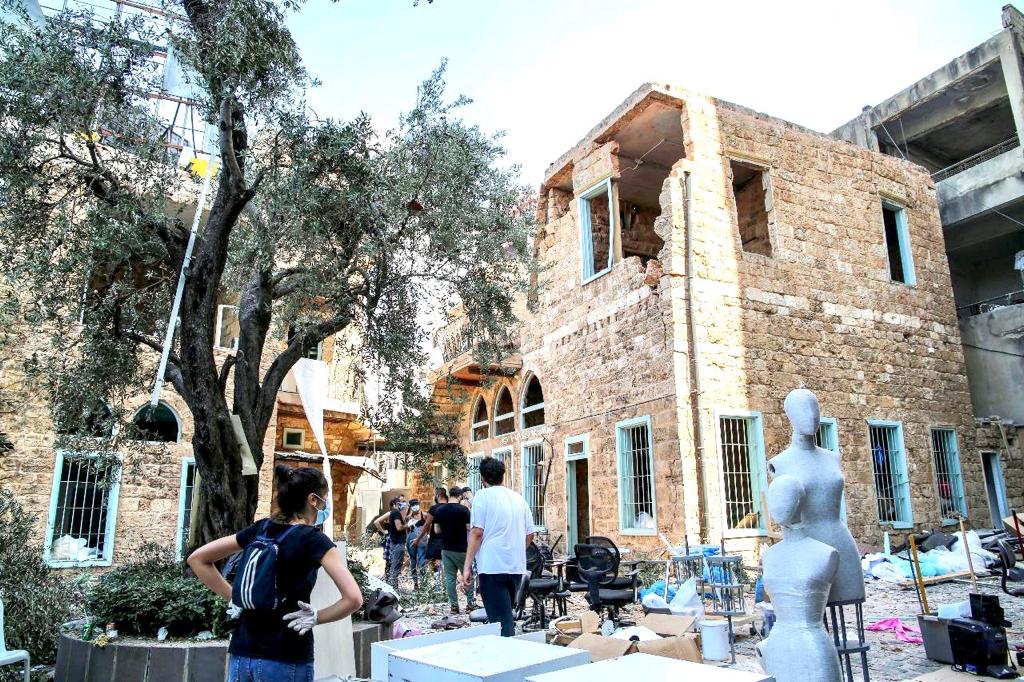
Designers Azzi & Osta’s studio after the blast
“Our Atelier was very much impacted. The explosion destroyed the facades, the windows, the lighting, the furniture, our merchandise, and with it, we lost the opportunity to continue our operations from Gemmeyze,” adds designer Yassmin Saleh who moved from the UAE to her birth place of Lebanon in order to pursue her design dreams. “It is hard for such a young brand to go through this hardship, especially when facing a series of events in an unstable and unsafe country. We hope that one day, all we will have to worry about are normal day-to-day problems such as late deliveries or contract negotiations.”
Repercussions of the blast, which affected more than half of the capital, are weighing heavy on the city’s creative establishments, and while they are thankful for their lives, Beirut’s artists and designers lament the loss of their work, and in many cases, their livelihood. “With the economy collapsing, whatever they had they put in their homes and businesses, and now their showrooms are underground. It’s a major disaster,” says Beirut- born designer Nadine Kanso. Known primarily for her eponymous Arabic calligraphy jewellery line, Kanso is also a photographer – her images are painted with layers of nostalgia for Beirut, and focus on the duplexity of the city.
Initial reports implied that the blast was not the result of a terrorist attack but an oversight of the government, which had previously been informed of the dangers of storing highly explosive ammonium nitrate at Beirut’s port. The country’s Prime Minister Hassan Diab and his cabinet resigned following the explosion, but the Lebanese people are demanding widespread change. Civil protests have been underway for the past year, now climaxing in the aftermath of the explosion – all while the city still grapples with the spread of the pandemic. “This was a very hard blow to the whole industry, and designers needs to design and create. We had COVID-19 constraints, a collapsed economy and a devalued currency – designers need resources, and need the ability to move forward,” say Azzi and Osta.

Photographer Nadine Kanso’s depiction of life in Beirut
In the wake of the blast, numerous organisations, including UNESCO and The Louvre, have pledged solidarity with Beirut, promising to aid with the city’s cultural rehabilitation. Many have launched international fundraising platforms such as the Lebanon Solidarity Fund, created by The Arab Fund for Arts and Culture and Culture Resource, who will contribute seed capital in addition to collecting donations.
Starch Foundation, Slow Factory Foundation, Fondation Saradar, Bureau Des Créateurs, Maison Pyramide, Faux Consultancy and Roni Helou meanwhile, have banded together to launch a crowdfunding campaign called “United for Lebanese Creatives”, and are raising money to aid the city’s independent designers and artists whose damages amounted to over $US850,000. Christie’s has also announced an initiative to raise funds for Beirut’s cultural reconstruction, including the Sursock Museum. Titled “We are all Beirut,” the charity auction will kick o online next month and will feature around 50 lots of art, jewellery and watches. “We need all the support possible,” says Beydoun. “We need the world’s spotlight on Lebanon.”
The demolition of downtown Beirut, and with it, much of the city’s art, fashion and design spaces, is a creative crisis with global consequences. Elie Saab – the Lebanese designer who is a regular headliner at Paris Fashion Week and was the first Arab to join the prestigious Chambre Syndicale de Haute Couture, reported the destruction of his main office and headquarters, in addition to his home, amid preparations for his September couture show in Paris. He and Zuhair Murad are two of the most coveted red-carpet designers among Hollywood celebrities, and can be credited for putting Lebanon on the global fashion map and paving the way for fellow Lebanese brands to follow.
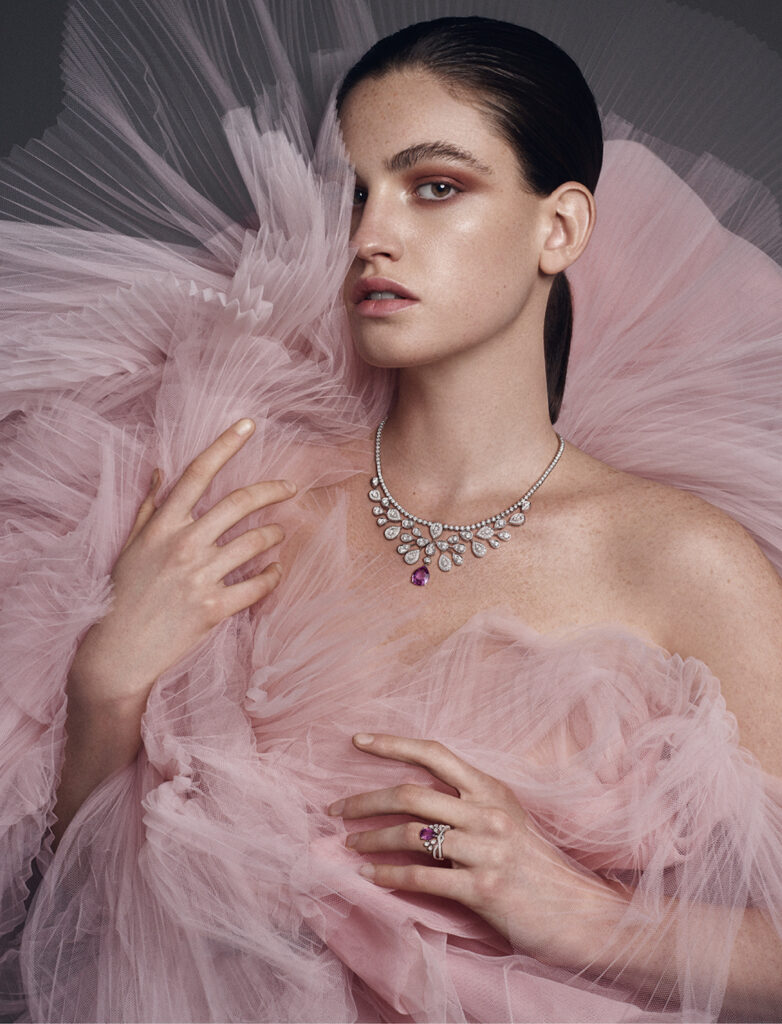
Zuhair Murad’s atelier was destoryed in the blast. The designer’s AW19 collection, photographed by Luis Monteiro for MOJEH 73
“Lebanon has always been a cradle of creativity and talent. Red carpet couturiers led the way, but today it’s a whole crew of fantastic, more minimalistic designers that are representing the region worldwide,” says Jreige. Marcela Danielova, founding member of Fashion Forward Dubai (FFWD), deems Beirut to be “the Paris of the Middle East”, and the fashion capital of the region. “From my experience at FFWD, Lebanon and Beirut were always the source of the most talented designers – they were kind of the core and building blocks of FFWD. Without Lebanese designers, it’s diffcult to curate the platform,” she says, naming talents like Hussein Bazaza, Lara Khoury, Mira Hayek, Tony Ward and Roni Helou as examples of those who have showcased at FFWD.
“We worked very closely with Starch Foundation – every year we presented two to three of their designers, and they developed into their own brands and kept coming and presenting with us,” she says. Under her new company, DNA Consulting, she hopes to offer complimentary services to Lebanese designers in need to help them get back on their feet.
“I am not Lebanese, but this beautiful city and its diverse culture and history has always been an inspiration to me,” adds Saudi Arabian designer Mohammed Ashi, who has housed his couturier in Lebanon since 2007. “We have been devastated by this explosion and how it has affected the businesses of so many designers and employees whether physically, emotionally or financially. The resilience of the Lebanese people will bring back the city’s glow, but it needs the support of everyone.”
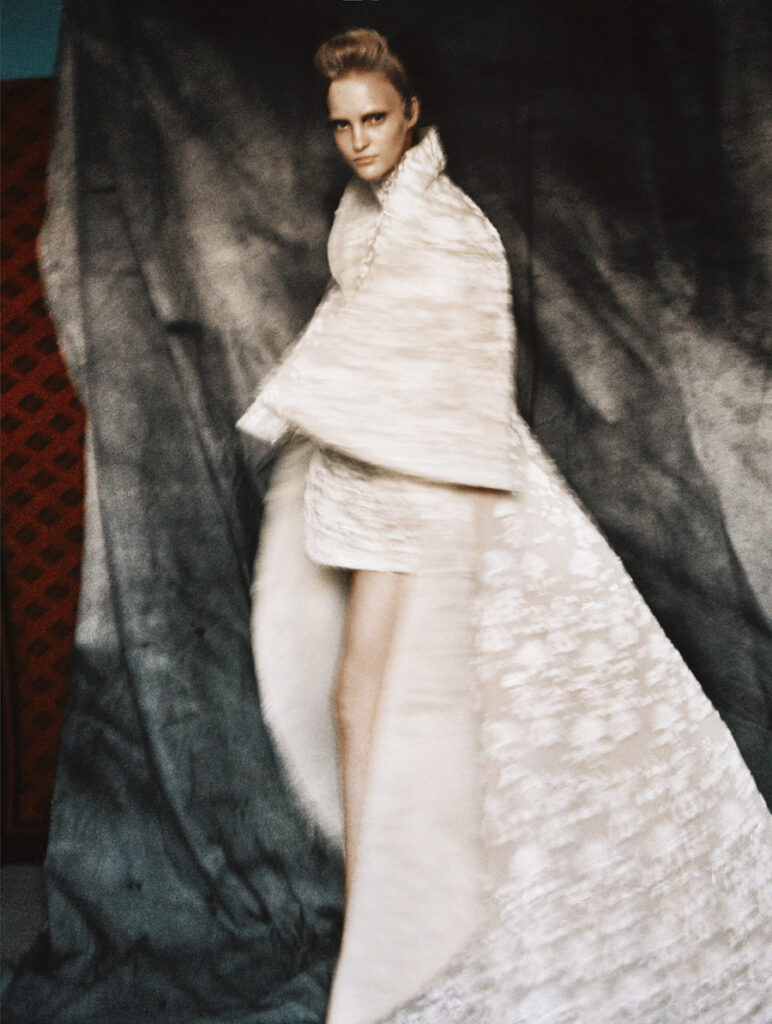
The work of Lebanon-based couturier Ashi Studio photographed by Laura Marie Cieplik for MOJEH 42
With the blast being the final straw in a far-reaching series of setbacks, a handful of Beirut-based creatives are considering emigrating elsewhere, fed up with the lack of accountability and stability in Lebanon. Others are eager to stay their ground, pick up the pieces of the broken city and pour a renewed sense of resolve into their work.
“Since the very beginning of our brand, we were faced with violence, lack of security, and lack of stability,” say co-founders of Vanina, Joanne Hayek and Tatiana Fayad. “The scope of this tragedy doesn’t compare to any of the obstacles we have faced in the past, yet we have developed resilience and a coping mechanism that we believe will help us and the rest of the population go through it. We heal and grow, through creativity.”
They emphasise the central role the capital has played, and will continue to play, in their designs. “Beirut is and has always been, our biggest source of inspiration. Its energy, its life, its people, its colours, its patterns, its memories…they have all fuelled our creativity over the years. Seeing it deeply wounded today strengthens our passion and our urge to interact with it and impact it through our creative effort,” they say.
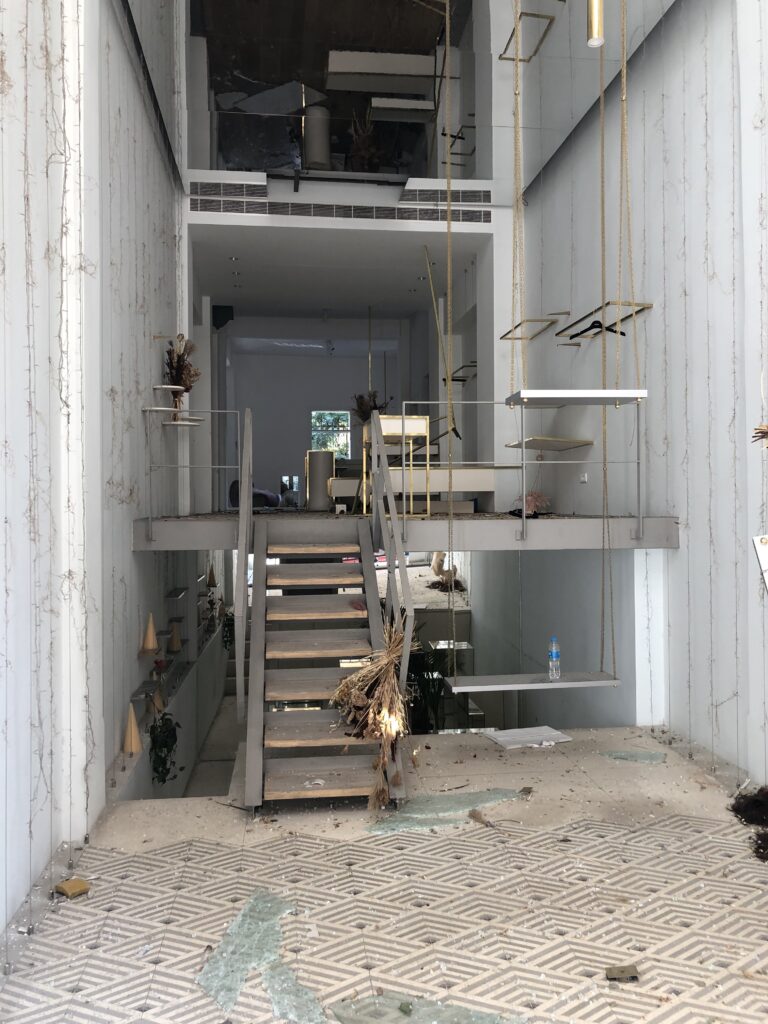
Vanina’s boutique was damaged in the blast
Some of the best art, after all, is born from chaos, disaster and tragedy. “Living throughout war – whether it’s direct war or an indirect kind of war, is an unfortunate cycle for the Lebanese,” says Kanso. “If you look at our history, there were always political tensions, wars and civil wars. These tragedies do inspire people, because for designers, creatives and artists, this is how they voice their concerns and their pain – it’s a statement, and it’s an expression.”
One way for artists and designers abroad to support those affected, says Kanso, is by sharing their showrooms and helping organise activations that will help keep Lebanese creatives in business. “I hope we can help them as much as we can, so that they can rise up again,” she says.
Forced into a new and unprecedented chapter, Beirut’s creatives are becoming revolutionaries, burying their losses with seeds of activism. “We need to be angry at the system we live under and we need to change it,” says Beydoun. “We are at a tipping point – we are either going sink into gloom and despair at the scale of the damage and violence done to us, or we rise up from it, fight back and reclaim our country.”

The debris on the floor of Sandra Mansour’s atelier
It will have to be a collective effort, driven by the millennial artists and designers who are nothing short of desperate for a chance to re-establish the lives they so passionately created for themselves. “It is only by standing together that we can rebuild our country. The hope I have for all of us in the creative industry, after this tragedy, is that we, the Lebanese youth, can finally reclaim our country and build it the way we know it should be,” says Helou.
One thing is for certain: the meaning of those three words on my Vanina rings hold more weight now, than ever. It will take more than words to rebuild Beirut’s creative world, from the ashes up – more than social media posts claiming solidarity and more than magazine articles shedding light on the plight of these soul-shattered artists. As sanguinely stated on Instagram by Beirut couture designer Rabih Kayrouz, who suffered injuries and a brain hemorrhage from the blast: “Words are not enough. We will not forget. We will judge. We will rebuild…and we will dance!”
Images: Supplied, Instagram
Read Next: How designers Azzi & Osta are salvaging their dreams after the Beirut blast

